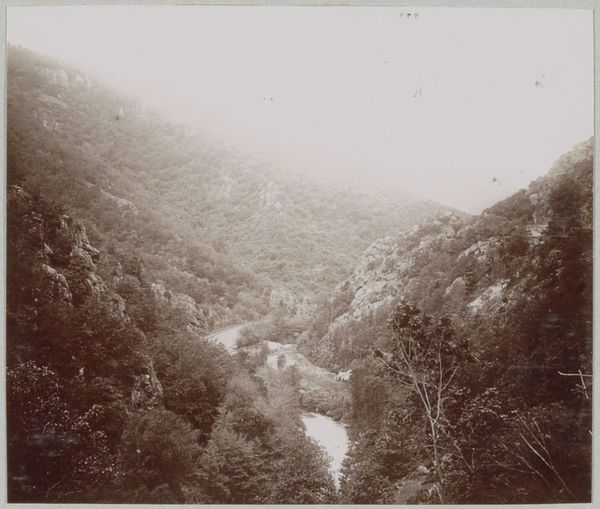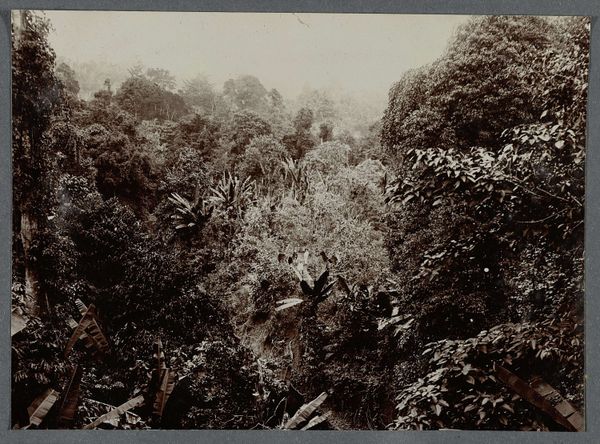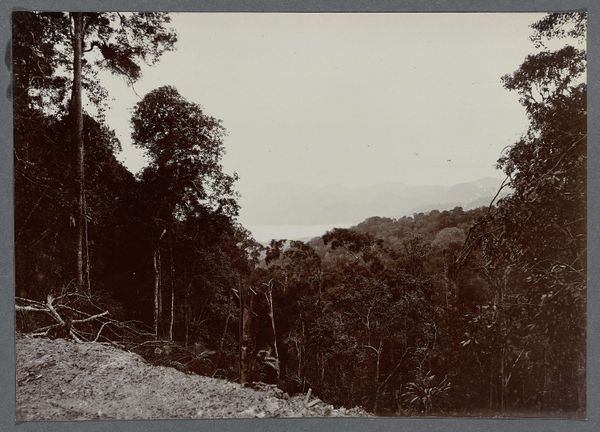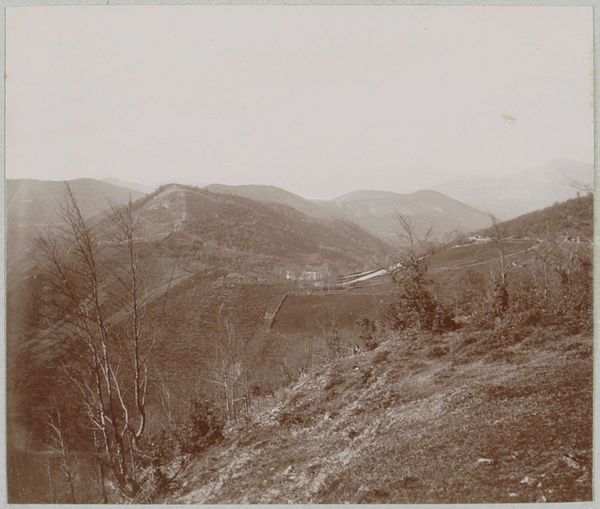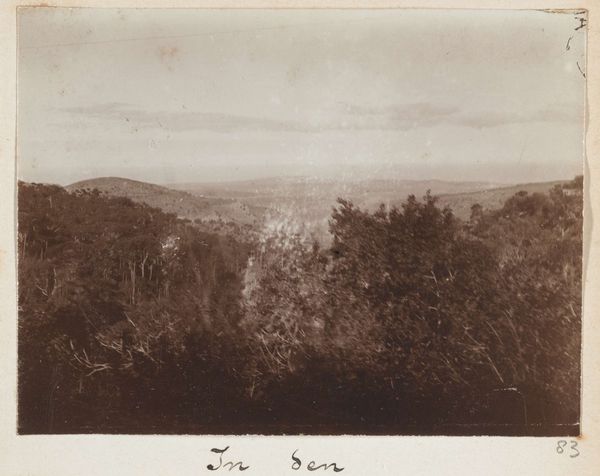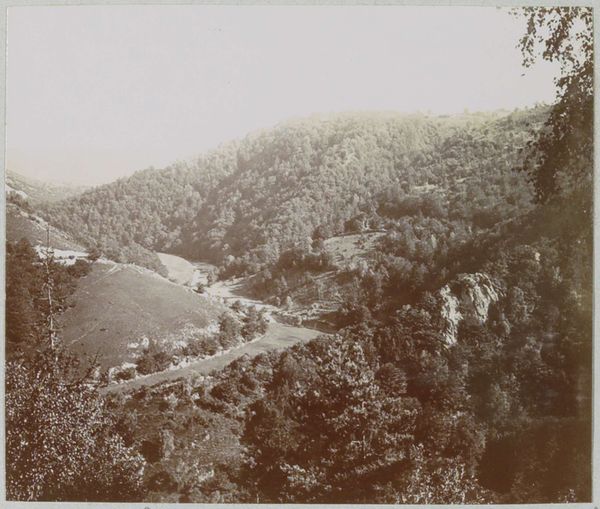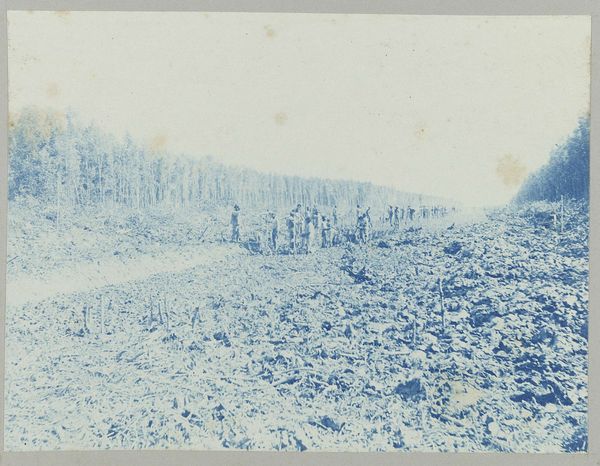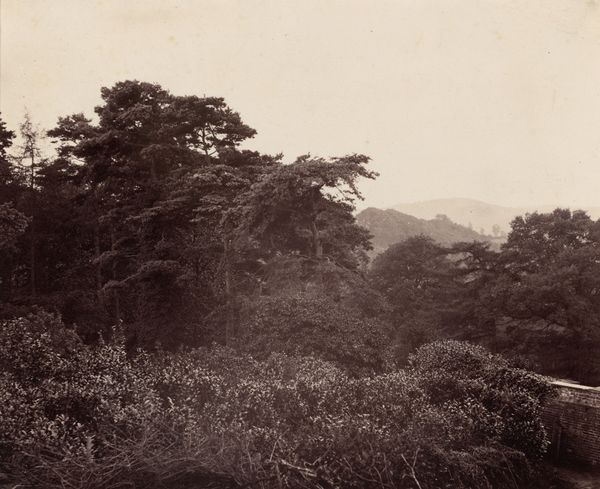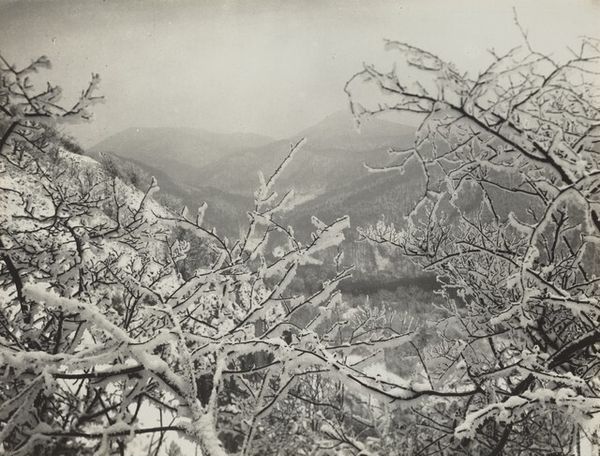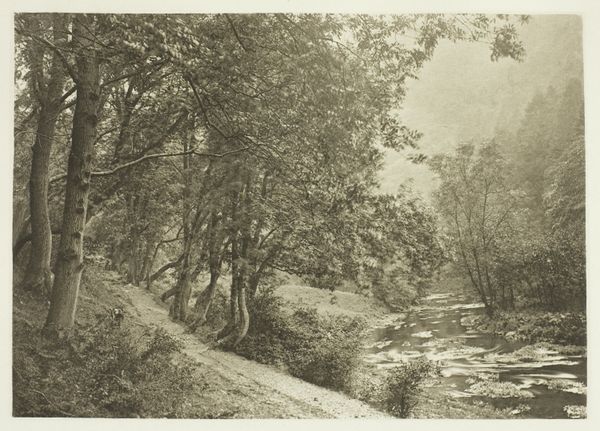
photography
#
pictorialism
#
landscape
#
nature
#
photography
#
realism
Dimensions: height 138 mm, width 200 mm
Copyright: Rijks Museum: Open Domain
Curator: What a captivating vista, so carefully observed! We’re looking at an artwork called “Boslandschap,” believed to have been created between 1903 and 1913. It is a photograph depicting a dense, sloping forest landscape. Editor: My immediate reaction is how it makes me feel almost swallowed up. It’s monochrome, quite subdued, which emphasizes the overwhelming presence of untamed nature. Is it untouched or subtly shaped by labor? Curator: That’s precisely where my thoughts lead as well. Considering the probable era and artistic styles of the day, the medium and tones achieved could represent a direct manipulation by the artist themselves. Pictorialism often employed special processes for printing photos with a particular artistic effect. Editor: The muted palette directs our attention. It's as though we’re seeing an allegorical representation of wilderness through a constructed gaze, both inviting and daunting. We have to acknowledge the power dynamic at play—nature often becomes an arena to claim dominion and resources. Curator: Right. These constructed images participated in an emerging visual culture where photographic technologies were rapidly changing modes of art production. We ought to look at what’s presented—photographic paper—but also at what's absent: how raw materials are acquired, how labor is assigned, and who holds the economic power to produce this scene. Editor: And that control extended to representation itself. Who gains access to these romantic landscapes? Who’s able to participate in preserving them? Consider its original audience; photography at this time also functioned as a privilege mainly granted to colonizers traveling and occupying the land. Curator: By appreciating this historical context, and scrutinizing the tools, we may better interpret this landscape as not just an unadulterated portrait, but rather a processed product which has emerged out of specific, political conditions of access and means. Editor: Absolutely. "Boslandschap," though seemingly a neutral landscape, carries an untold account of cultural frameworks through nature, history, and the power of representation, challenging us to confront existing norms.
Comments
No comments
Be the first to comment and join the conversation on the ultimate creative platform.
